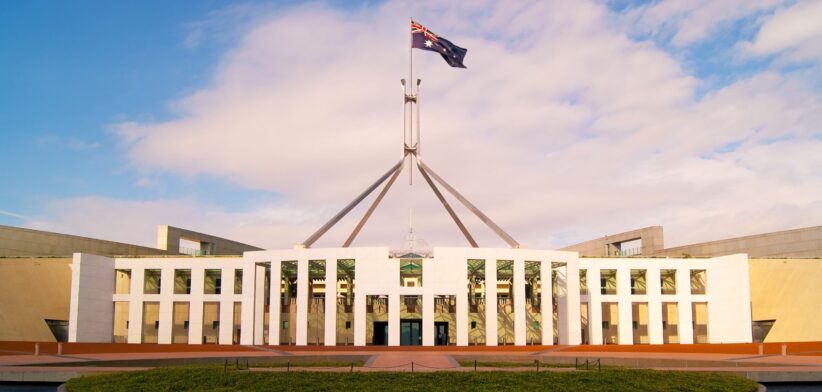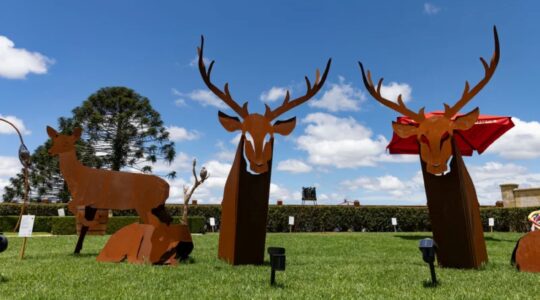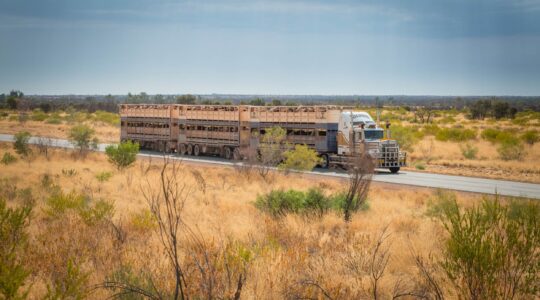By Michelle Grattan
If anyone had any doubts before, Sunday’s Liberal and Labor launches highlighted that this federal election is an auction for votes, in particular those of the under 40s and people in the outer suburbs.
Amid the usual launch hoopla – the Liberals choosing western Sydney and Labor returning to Perth – both parties announced major fresh housing initiatives. They were making a deep bow to what’s a central issue for younger Australians who still aspire to the so-called “Australian dream” but can’t see themselves affording it.
Significantly, Peter Dutton also produced a tax handout – a tax offset of up to $1200 targeted to lower and middle income earners. This was despite his signalling earlier in the campaign he wouldn’t be able to afford to do so. On tax, Anthony Albanese promised people would be able to claim a $1000 automatic tax deduction for work expenses (at a cost of $2.4 billion over the forward estimates).
The Liberal campaign has been flagging. Labor has appeared headed for victory, at least in a comfortable minority. The Liberals might say they’ve been working on the policies produced on Sunday for some time, but they do have a “break glass” feel about them, as the opposition seeks to reinvigorate its campaign.
The Liberals’ proposal for the interest on a mortgage to be tax deductible has strict limits. It only applies to first home buyers, to new homes and (for the house buyer) for five years, and provided the buyer remains living in the home. There is a means test, and the interest deductibility only applies on the first $650,000 of the loan. This is why the plan is costed at a modest $1.25 billion over the forward estimates.
The plan will come under some tough criticism in the final three weeks of the campaign. Independent economist Saul Eslake said on Sunday the policy would put upward pressure on house prices.
We have 60 years of evidence going back to the Menzies government’s initial first home owners’ grant scheme that anything allowing people to spend more on housing than they otherwise would results in more expensive housing and a smaller proportion of the population owning it.
Eslake argues that when this policy is combined with the Liberals’ policy to give people access to their superannuation for a deposit, “they make a candidate for the worst policy decision of the 21st century so far.”
In its new housing offer, Labor is promising to invest $10 billion for the construction of up to 100,000 new homes to be sold only to first home owners. Also, the present scheme under which the government guarantees a 5 percent home deposit would have the means test removed (the Liberals would also tweak some detail of this measure).
Labor in its first term committed to spending $33 billion and set a target of 1.2 million new homes over five years. Progress to the target is off course. The latest initiatives could be seen by some voters as more of the same.
The Liberals hope the interest deductibility policy might be a show stopper. But there is a salutary lesson from the 2022 campaign. The Liberals also came out at that campaign launch with a big housing initiative – to allow people access to their super for the purchase of their first home.
It wasn’t the “game changer” Scott Morrison labelled it. It was too late, for one thing. For another, policy auction or not, many voters make decisions on wider criteria, including what they think of the leaders and the context in which the contest is taking place.
The latter is especially important this election, when the vagaries of the Trump administration are driving some voters towards staying with “the devil you know”.
While the Liberals’ tax offset announcement came as a surprise, perhaps it was inevitable the Coalition would have to offer something on taxation. It seemed at the time crazy brave for the opposition to reject the government’s $17 billion budget package of tax cuts.
The opposition rationalises the money involved in its election carrots. The earlier-announced cuts in petrol and diesel fuel excise (costing $6 billion) would last a year (although open to extension).
Then the $10 billion one off tax offset would cut in. The Liberals argue this sequencing balances immediate cost-of-living relief with economic responsibility.
Nevertheless, the opposition’s giveaways don’t sit easily with its mantra about the need to cut spending. We have yet to see the circle squared, and that will only come (if it does) at the end of the campaign when the accounting numbers are all submitted.
Meanwhile, Labor is making the most of the threat of Dutton’s unknown spending cuts. Albanese said in his speech:
If Peter Dutton won’t tell you what cuts he will make before you vote, if he refuses to say where the $600 billion for his nuclear reactors will come from, then every other promise is worthless.
The figure of Donald Trump continues to hang over the campaign, with Albanese declaring “the Liberals want to copy from overseas”.
In an own goal on Saturday Jacinta Price, who is shadow minister for government efficiency, referred to the opposition’s commitment to “make Australia great again” at an appearance with Dutton.
Dutton’s launch speech ran for the best part of an hour, with three former prime ministers, John Howard, Tony Abbott and Scott Morrison, in the audience. Predictably, there was no sign of Malcolm Turnbull.
Julia Gillard was there for Albanese’s launch. Paul Keating didn’t make the trek to Perth; Kevin Rudd, as ambassador in Washington, has other responsibilities these days.
– Michelle Grattan is a Professorial Fellow, University of Canberra.
This article was first published in The Conversation.








